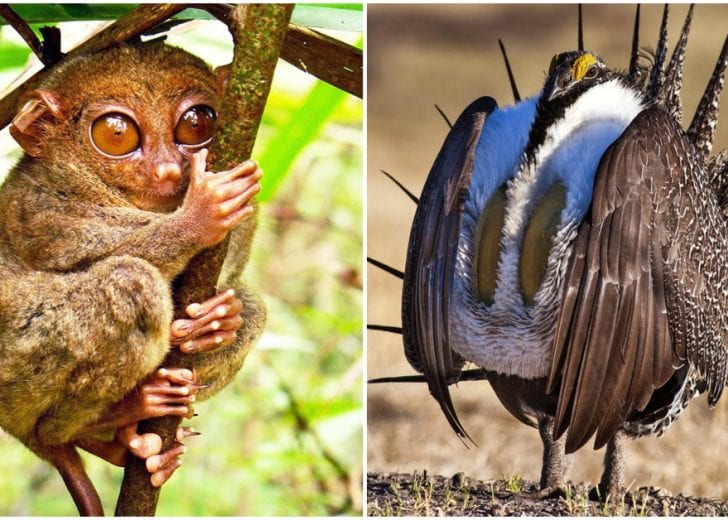
The world is fascinating, and it’s even more intriguing when you think about the vast lands and oceans that we still haven’t explored. While astronauts keep breaching the atmosphere, we are talking about the earth in this case. With 70% of the surface covered by oceans and pristine lands sequestered across the globe, who knows what we are yet to discover.
Scientists always try to give us answers by traversing the overgrown jungles covering different corners of the globe and also exploring the depths of our oceans. These missions constantly unveil unique-looking creatures, never-before-seen plants, and aquatic marvels. With that said, let’s explore some of the weird animals found across our planet.
Japanese Spider Crab
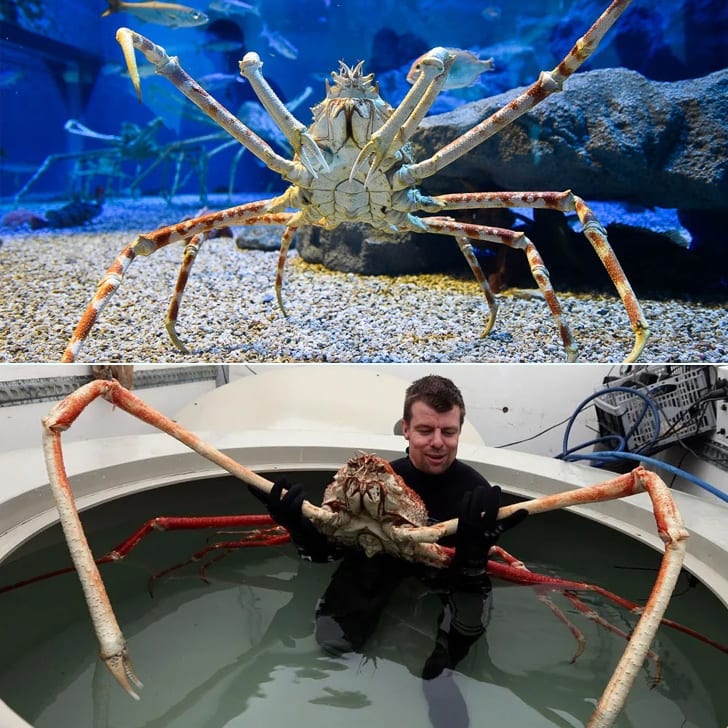
This long-legged crab can make a delicious meal, and with the most considerable legs of all arthropods, it means that there’s enough meat to go around. Two fossils of the Japanese spider crab revealed that it dates back to the Miocene era. These crustaceans can reach up to 12-foot lengths when measured across their limbs.
They are also astute at blending in with their surroundings by adorning their shells with sponges and other sea critters. The disguise works as a defensive mechanism, and it also helps them appear less threatening to prey. You most likely won’t indulge in spider crabs between January and April because Japanese laws prohibit their fishing around this time when the crabs are mating.
Satanic Leaf-Tailed Gecko
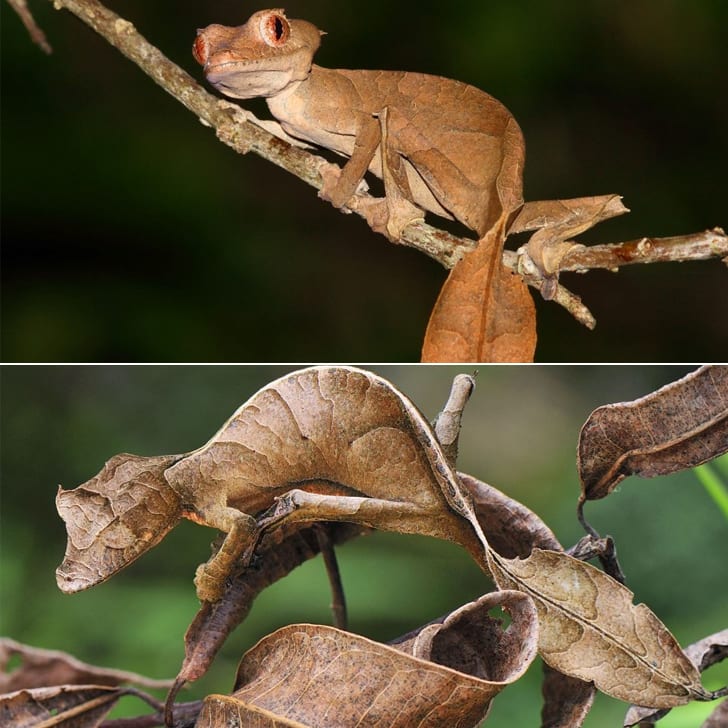
This creature is referred to as the satanic leaf-tailed gecko, and that is quite an introduction for a lizard that has the cunning power to blend in with the foliage in its surroundings. The animals look like a bunch of dried up leaves, making them quite the masters of camouflage.
They can pull a fast one on their prey, and they typically feed on flies, spiders, roaches, snails, and crickets. These lizards are endemic to Madagascar, and they are also interchangeably referred to as phantastic leaf-tailed geckos or eyelash leaf-tailed geckos.
Proboscis Monkey
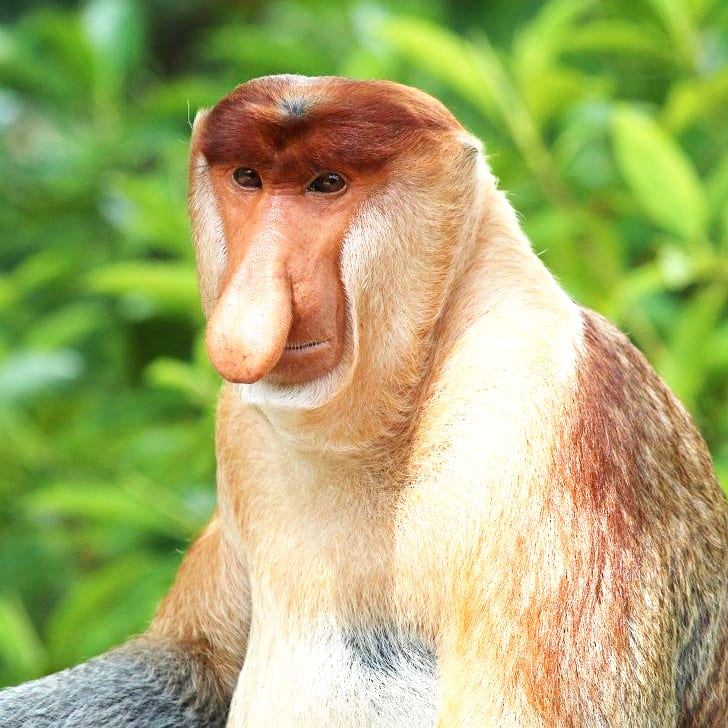
There is a reason why these primates are known as long-nosed monkeys. The Proboscis monkey also has a long tail, and it’s covered with reddish-brown skin. Their noses only grow long when they are adults; when young, they have almost non-existent noses.
These monkeys are found in Southeast Asian mangrove forests. They are also pot-bellied, or at least their bulging stomachs make it look like they carry a considerable amount of visceral fat. Their infants also have blue faces that darken into a gray shade when they grow. There are also several Proboscis monkey species and most feature webbed toes.
Dugong

The dugong is a marine mammal observed in the warm Indo-West Pacific coastal waters of Australia and East Africa. They are herbivores and spend most of their time foraging the seafloor for food. They use their protruding mouths to chow down on seagrass. Estimates have it that the dugong can consume as much as 88lbs of marine plant matter daily,
Without dorsal fins or hind limbs, they rely on their flippers to move through the water. Dugongs are relatives with manatees, hence a similar appearance and mannerism. Dugongs sometimes stand on their tails to catch a breath above the water surface.
Maned Wolf

It’s called a wolf but looks like a fox, and it is neither. It is a canid found in South America, and it is the only member of the Chysocyon genus, which translates to “golden dog.” It is also South America’s largest canid weighing as much as 48lbs and measuring an estimated 3,9 feet in length.
Its reddish coat and, of course, the long, thin legs are its most striking features. As a crepuscular animal, its most active in the twilight hours, and it is also omnivorous. It communicates through scent making and releasing a “roar-barking” call.
Venezuelan Poodle Moth
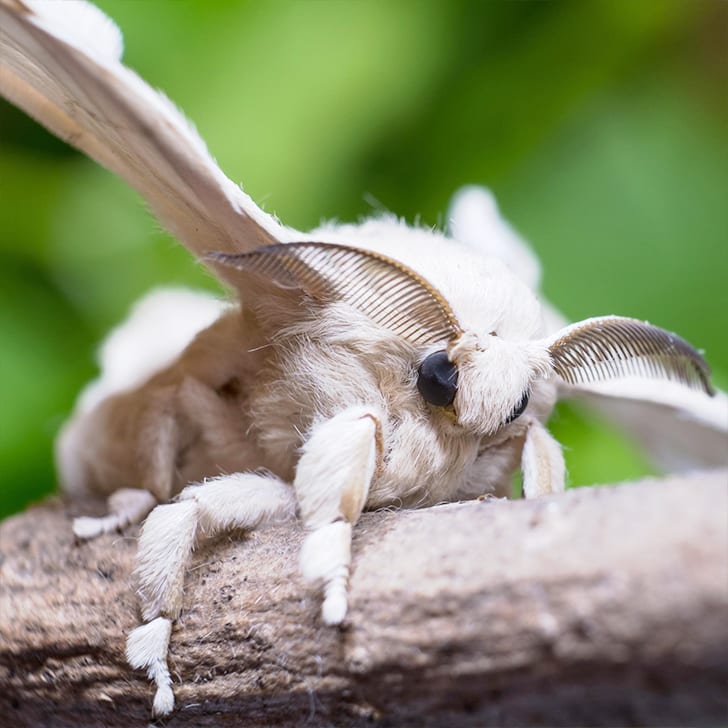
We only became aware of the Venezuelan Poodle Moth’s existence about a decade ago. That hasn’t given scientists adequate time to learn more about this insect. Dr. Arthur Anker, a zoologist, first photographed the insect in Venezuela’s Gran Sabana region. He was immediately drawn to the moth’s fur and its overall unique, poodle-like appearance.
However, it hasn’t been established whether this is an entirely new moth species or if it belongs to an existing species. However, Dr. Anker, backed by another scientist, hypothesized that the moth might belong to the Artace genus.
Mata Mata Turtle
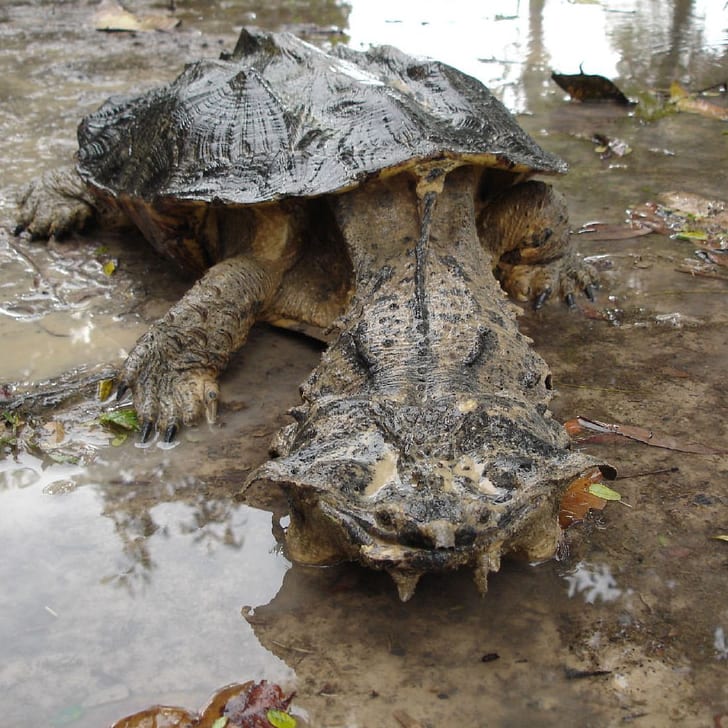
The mata mata is a freshwater turtle found around the waters of South America. They are usually observed in the Amazon and Orinoco basins. The mata mata is sedentary and has a triangular-shaped head that looks like it’s flattened. Their large heads also feature tubercles.
Its tubular snout carries a horn as well as spikes providing protection when confronted by predators. It is also great at camouflaging in its surroundings for added protection. The mata mata’s shell looks like tree bark while its head could appear like a leaf to the unsuspecting prey.
Greater Sage-Grouse
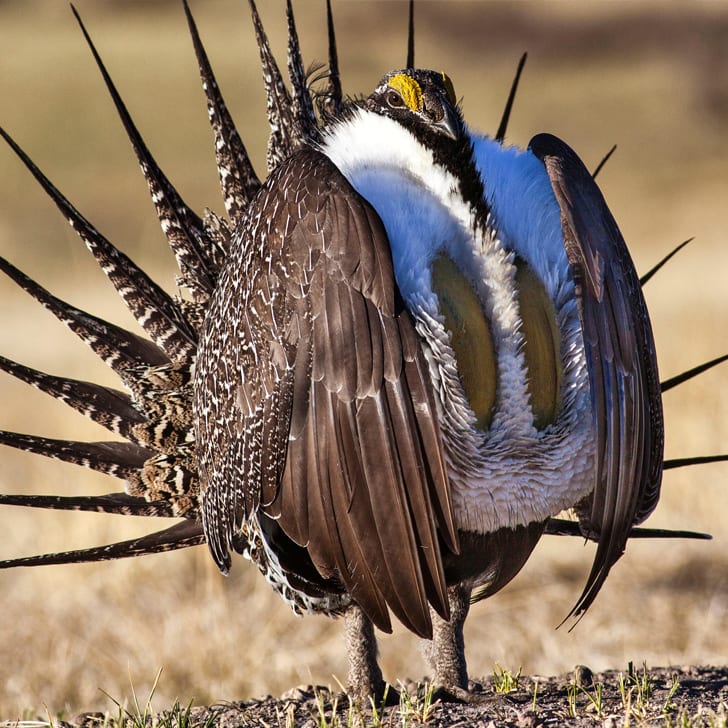
This weird-looking fowl is found in North America. The male has a pair of large air sacs on its chest. They produce a popping sound that attracts the female members of the species. A congregation of male greater sage-grouse is known as a lek, and these “meetings” are often convened to break into a popping chorus calling out to females.
Sadly, these peculiar birds have fallen prey to human-driven encroachments into their territory. Two species of these birds exist, and the conservation status is unfortunately considered as threatened, near-threatened, or endangered.
Red-Lipped Batfish
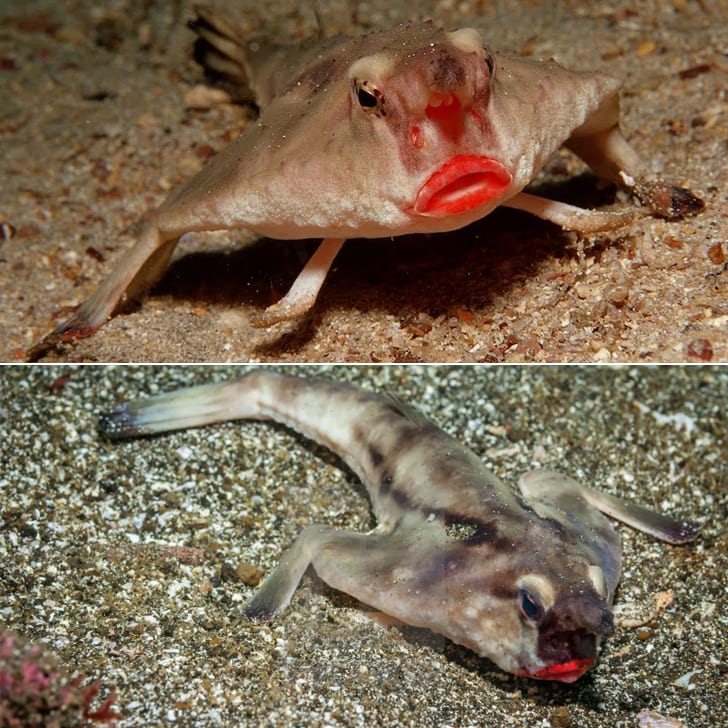
This unusual creature wears its name on its face, with a set of large red lips. The red-lipped batfish has waxy lips in an almost fluorescent hue that appears to be permanently in a frown. The rosy-lipped batfish (Ogocephalus porrects) is a close relative, but the red-lipped batfish is found in the Galapagos Islands.
Members of the batfish species aren’t the best swimmers, but they can technically walk on water using their pelvic and dorsal fins. They are often observed standing using their fins as legs. In full maturity, their dorsal fin transforms into spine-like lures.
Uakari
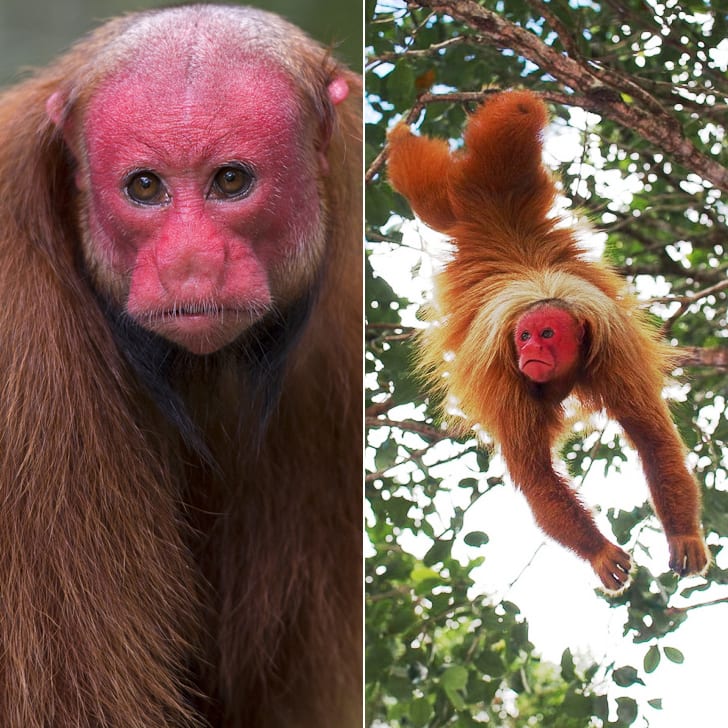
The aspect that makes the uakari strange-looking stares you right in the face. This mysterious creature resides in South America, and it’s hard to miss the red face. Also called the bald-headed uakari, its red face might make it look intimidating, but it’s a small primate complete with a short tail.
It inhabits the Varzea Forest and other woodland forests that are close to water bodies in the western Amazon region. The females get pregnant every two years or so, and only birth one infant. This limits the rapid growth of their population.
Tarsier
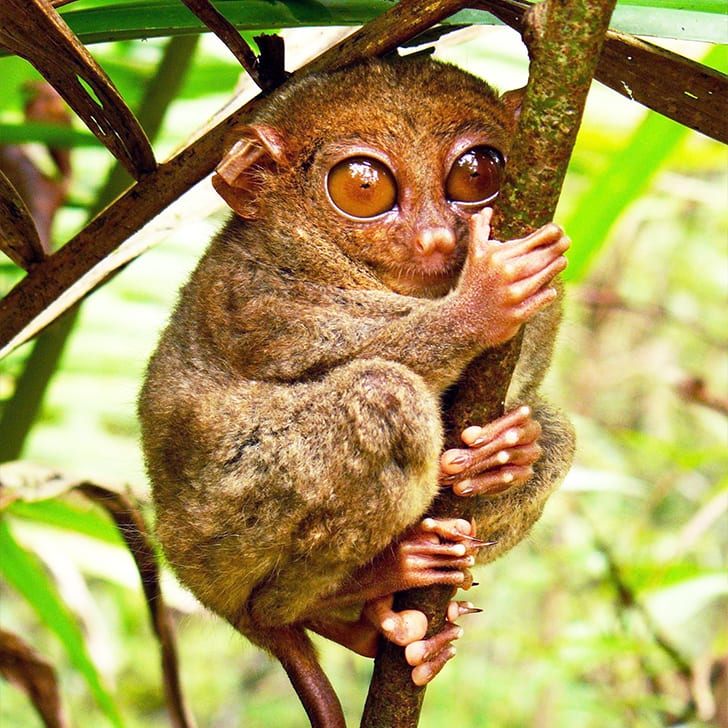
These odd-looking mammals are part of the Tarsildae family, and they sport some of the proportionately most prominent eyes seen on similar creatures. The tarsier’s humongous eyes aren’t the only unusual aspect about them, but they also can’t even move their large eyes!
On the upside, tarsiers have excellent night vision when compared to their primate counterparts. That is why they are most active at the time and hunt at night. These bats were once found spread out in different regions, but their population is highest in Malaysia, the Philippines, and other Southeast Asian countries these days.
Lowland Streaked Tenrec
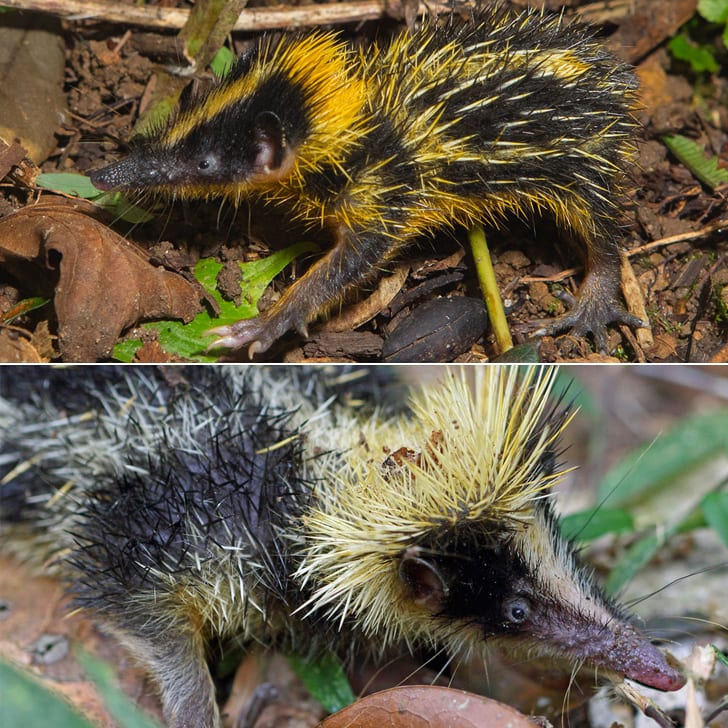
These creatures resemble hedgehogs because spines also cover their bodies. It is a defensive mechanism meant to protect the lowland streaked tenrec from predators. You are only likely to see one of these strange-looking animals in Madagascar. The tenrec also has a long nose, and its spines are yellow and black.
Thirty-seven known tenrec species are inhabiting Madagascar, and five of them are observed to have the spines similar to those seen on hedgehogs. The animals are insectivores and known to dig around quite a lot in search of food.
Pink Fairy Armadillo
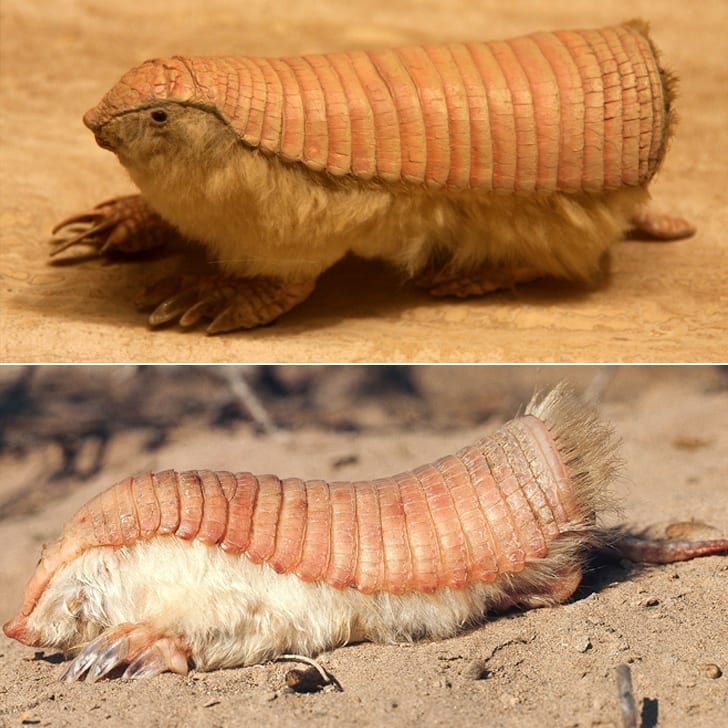
When a photo of the pichiciego, the smallest armadillo species, first made rounds online, most people thought that it was Photoshopped. It’s also interchangeably called the pink fairy armadillo, and you’ll find it in central Argentina inhabiting sandy dunes, plains, and grasslands.
It’s just about five inches in length, and the armadillo is usually consumed with burrowing underground due to its sensitivity to habitat changes. It is covered by a thin membrane topped off with silky yellow/white fur. The blood vessels beneath the membrane lend it its pink hue.
Saiga Antelope
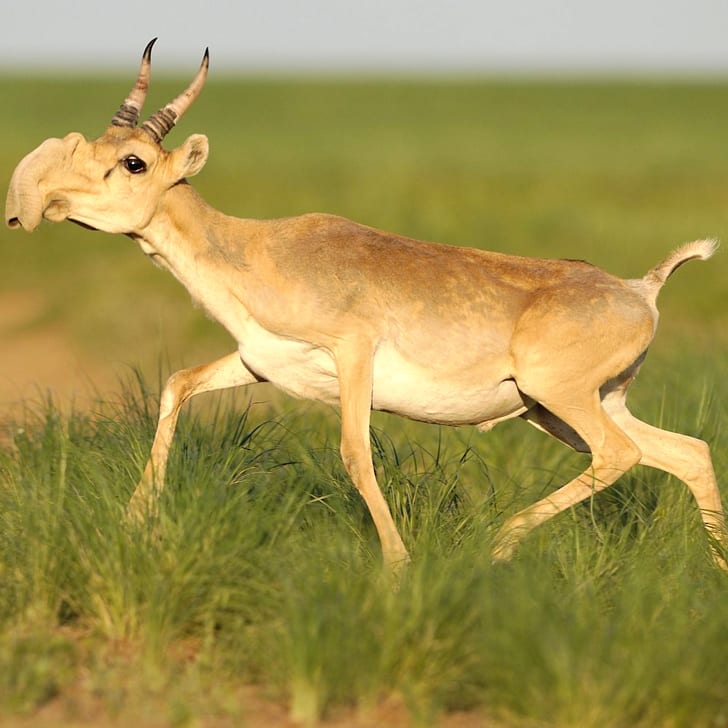
The saiga antelope isn’t a new species by any means; its been in existence since the Pleistocene era. However, it’s currently at a critical stage of endangerment after 60% of the population were wiped away by a bacterial infection in 2015.
Mass hunting is also to blame for the drastic decline in the saiga antelope’s population. The antelope’s drooping nose is one of the features that make it look a bit odd. The antelopes are now found exclusively in Russia and Kazakhstan, with a few migrating to Uzbekistan and sometimes Turkmenistan during winter.
Blue Dragon
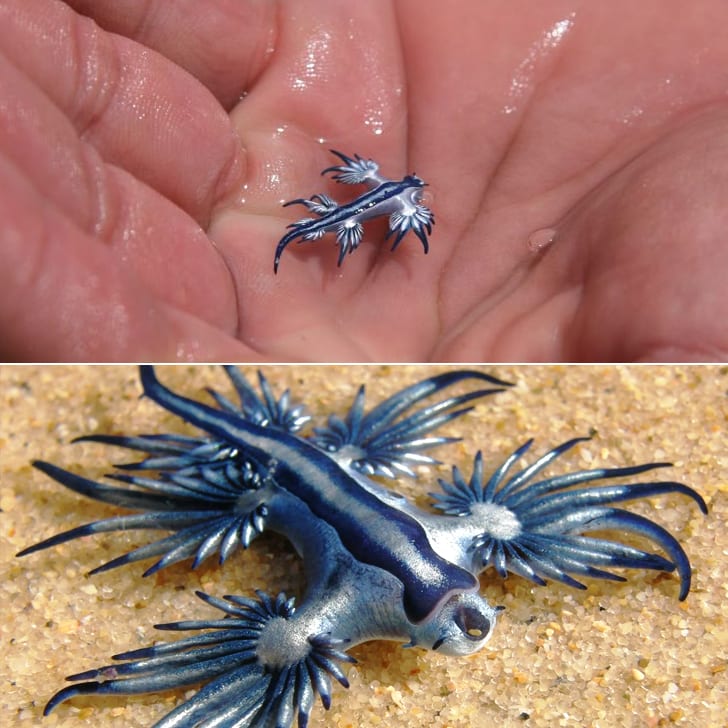
The Glaucus Atlanticus is better known as the blue dragon and is a sea slug that peculiarly floats upside down. The pelagic slug stays near the surface and travels with ocean currents. The slug also stores an air bubble in its stomach that helps it keep floating.
It only measures one-inch length-wise, and it feeds on hydrozoans such as the Portuguese man o’ war. In a bid to stay above the food chain, the blue dragons are known to consume and store man o’ war stinging cells, which it uses to help defend itself.
Aye-Aye
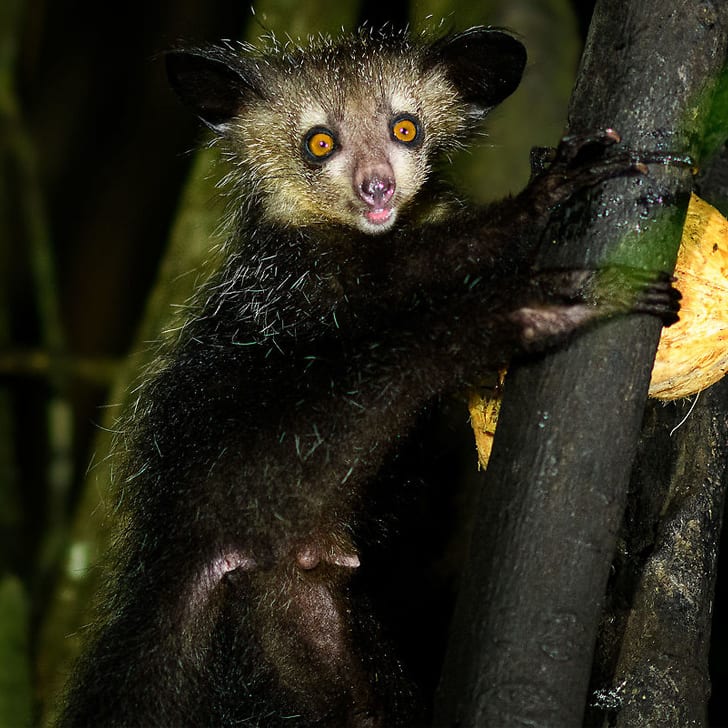
These long-fingered primates are found in Madagascar, and they are the planet’s largest nocturnal primates. They stand out from other primates because they typically gnaw holes in trees searching for grubs. The aye-aye also has opposable thumbs that function much like our own.
These creatures were thought to bring nothing but bad luck, and for years their populations suffered after they were hunted. These primates are mostly harmless, and the only damage they cause is when they go to town on coconut trees or dig around for grubs. Madagascan laws have since outlawed hunting these creatures.
Axolotl

Also referred to as the Mexican walking fish, this neotenic salamander is actually an amphibian and not exactly a fish. The axolotl was discovered around Mexico City lakes, including Lake Xochimilco. They resemble salamander larvae with features like lidless eyes and underdeveloped limbs.
They also have wide heads, thin digits, and the females are markedly bigger compared to the males. Scientists have found that the axolotl can essentially morph into a regular salamander when they are injected with the amphibian’s hormones. Axolotls are also a favorite for scientists because of their regenerative abilities that see them regrow lost limbs.
Star-Nosed Mole
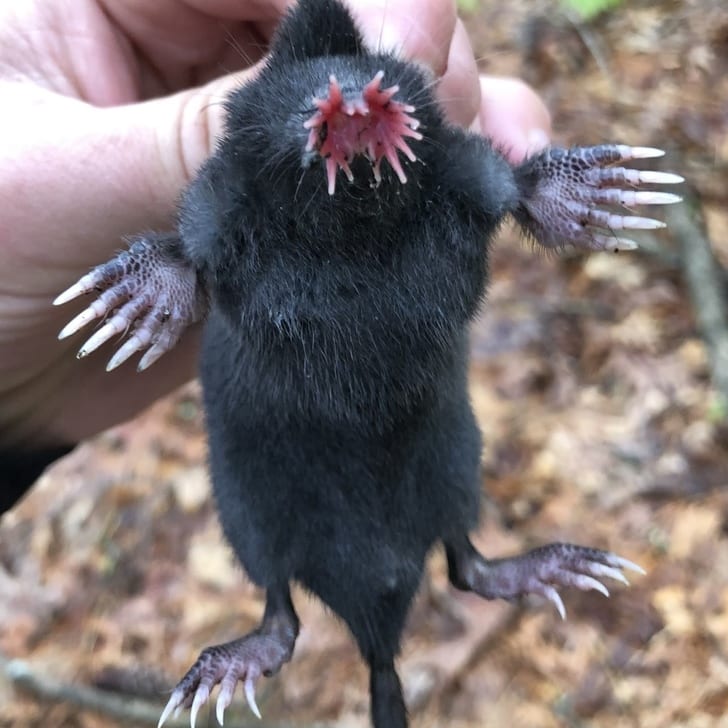
The star-nosed mole favors habitats in moist and low-lying areas in North America. Its nose has about 25,000 miniature sensory receptors. The hamster-sized mole uses these receptors to feel its surroundings. The mole is virtually blind, and if not for these touch receptors referred to as Eimer’s organs, it wouldn’t be able to get around.
The receptors may help the mole perceive seismic vibrations. One of the mole’s unusual abilities is being able to sniff underwater. It does this by blowing bubbles out and then sucking them in again. The mole’s reputation as a fast eater precedes it, and in just a second, it can hunt and devour a bug.
Umbonia Spinosa
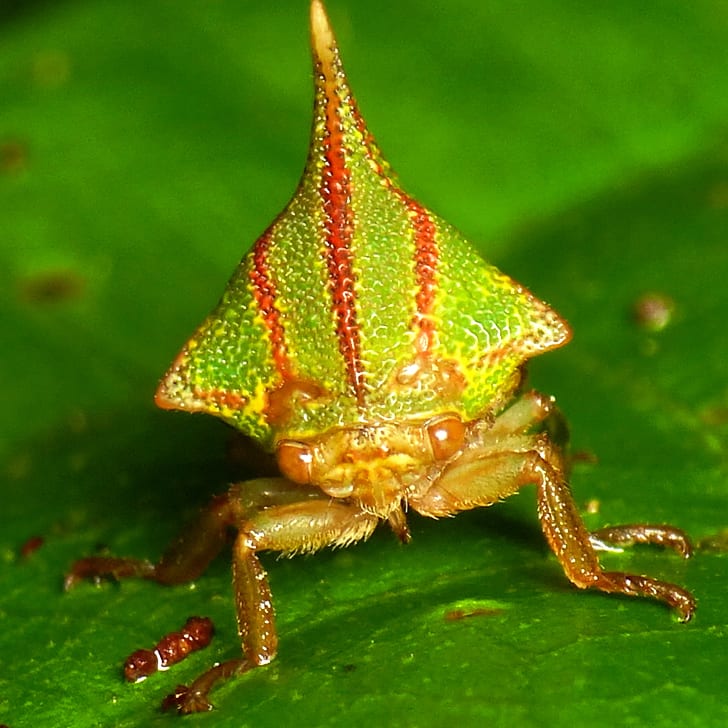
Picking up twigs or thorns will never be the same once you become more acquainted with this chap. The Umbonia Spinosa is part of the Membracidae species typically found in South America. They are treehoppers, and more than 3,200 species exist, distributed all over the world except for Antarctica.
Their dorsal fin stands out prominently, and that’s why they are sometimes called thorn bugs. When it rains, you are likely to come across a bush adorned with several of these critters, making it appear thorny. They only live for a few months.
Sunda Colugo

The Sunda colugo is not a lemur despite sometimes being called a Sunda flying lemur. It also doesn’t fly, but rather, it glides from one tree to the next at night. The colugo has a coat of red fur that is sprinkled with white specks.
It is found in countries like Thailand, Malaysia, and Indonesia, where it is protected against hunting. Deforestation has also significantly threatened the animal’s existence. The arboreal gliding mammal feeds on fruits, young leaves, flowers, and shoots. Females carry a single infant over a 60-day gestation period.
Purple Frog
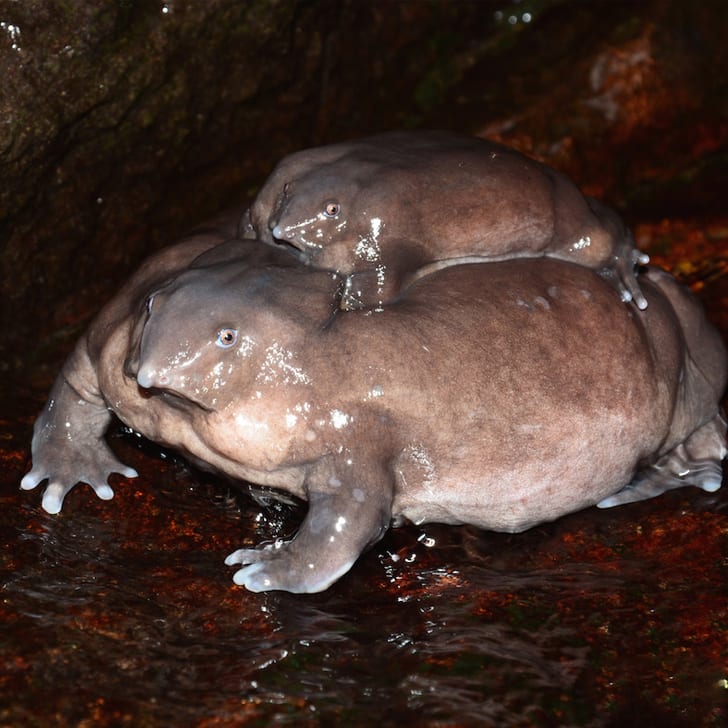
The purple frog is sometimes called the pig-nosed frog because of its sucker-like mouth set on its tiny face. The frog is found in India, and it’s known to lay its tadpoles on algae-covered rocks, The adult usually make their home underground away from encroachment, but their tadpoles make more appearances above ground and locals use them for medicinal purposes.
Locals also fashion amulets out of the tadpoles with the belief that they can help kids who fear storms get over the trepidation. Deforestation hasn’t helped the situation, and purple frogs are currently endangered.
Pacu Fish
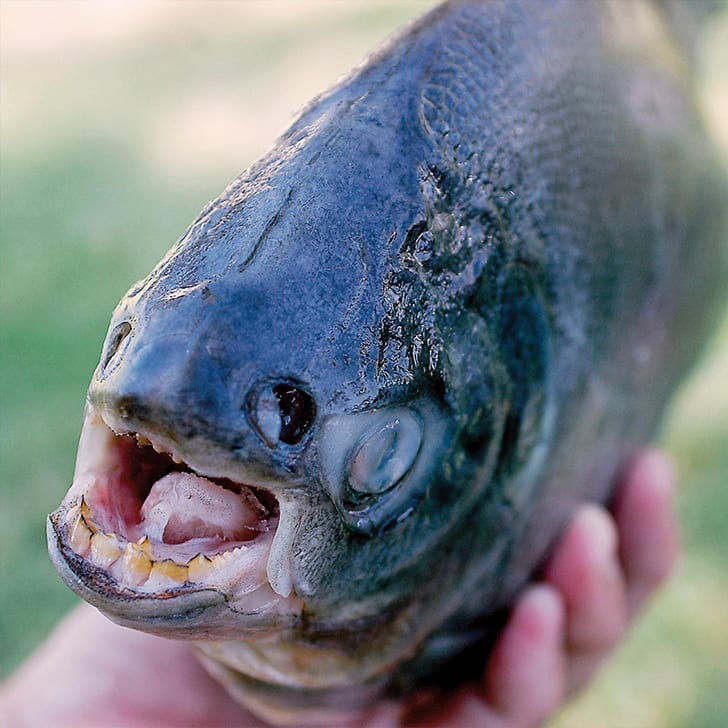
Photos of the Pacu fish seem questionable, but this is a marine creature that exists. The first thing you’ll notice about it is the set of teeth it has resembling our molars. It’s a bit consoling that this fish doesn’t have the piranha’s razor-sharp, pointed teeth!
The pacu can crunch down on its food, but fortunately, it isn’t a flesh-eater. The fish favors sea protein and plant materials instead. Pacu fish can also grow to larger sizes compared to piranhas, and pacu fish record lengths of about 3.5 feet and 88lb weights.
Shoebill

One look at the shoebill and you can see where it gets its name. The stork-like bird has a distinctly shaped beak that resembles a shoe. It is native to East African swamps where they can stand still for long periods waiting to pounce on fish.
They are sometimes called whaleheads, and with their wings open, their length spans up to 8.2 feet. They benefit from traversing the same waters inhabited by hippos, which essential bulldoze channels. This accords the shoebill a supply of otherwise inaccessible fish in papyrus-infested swamps.
Hammer-Headed Bat
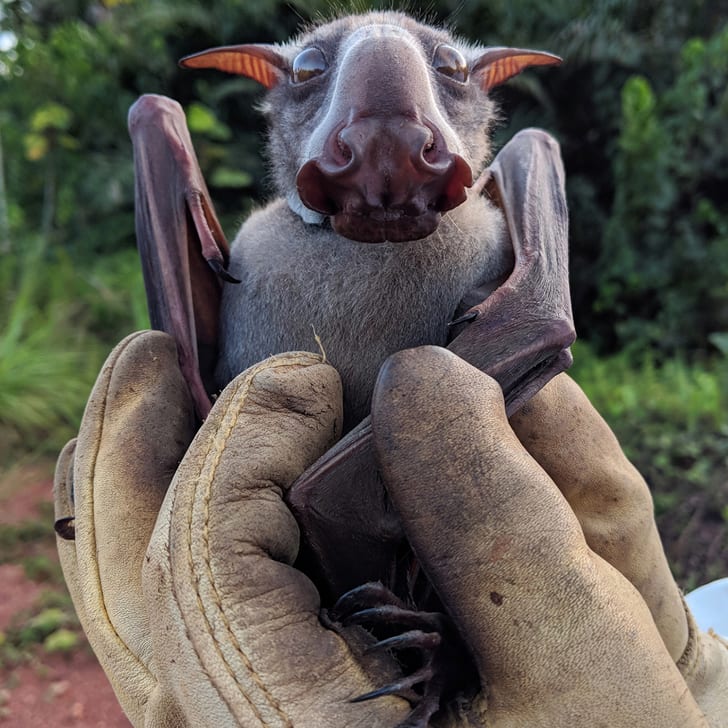
Call it the big-lipped bat, hammer-headed fruit bat, or the hammer-headed bat; one agreeable thing is that this is one peculiar-looking mammal. These megabats inhabit swamps, mangroves, palm forests, and riverine forests around equatorial Africa. It’s the largest of such creatures in the continent of Africa.
They can grow to widths of three feet and lengths of about ten inches. Scientists suggest that these bats carry the deadly Ebola virus despite not showing any signs that they are harboring it. What’s also unclear is if humans can contract the virus from these bats.
Greater Superb Bird-of-Paradise
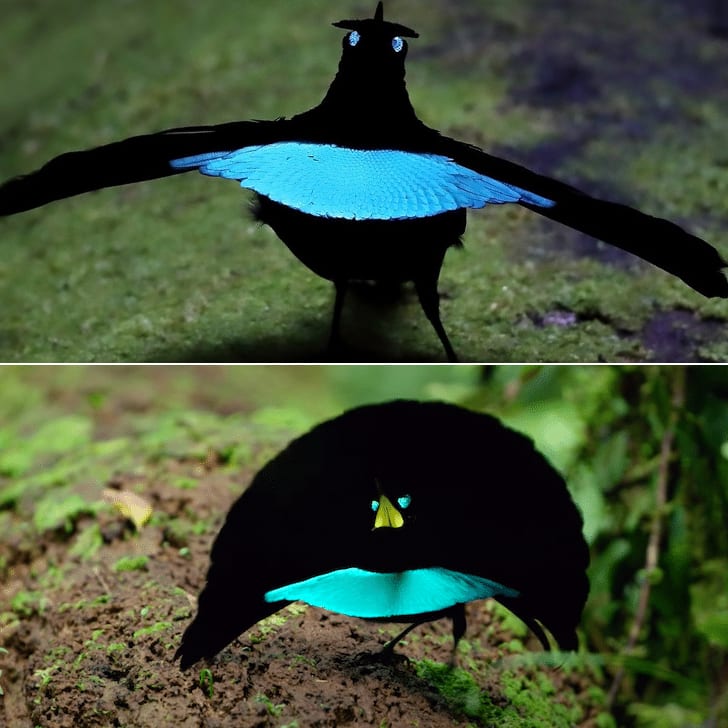
The crescent-caped lophorina, native to New Guinea, earned species-status in 2018, after years spent classified as a Superb Bird-of-Paradise. The bird’s crest-nose/tuft lends it the name lophorina, but it’s now referred to as the Greater Superb Bird-of-Paradise.
It isn’t the strangest creature we’ve seen, and in fact, it’s a rather beautiful bird. That’s until it fully opens its cape-like feathers and positions them behind its back. It instantly transforms into an almost threatening-looking creature. The males are the ones that display this trait, and it’s all meant to attract females!
